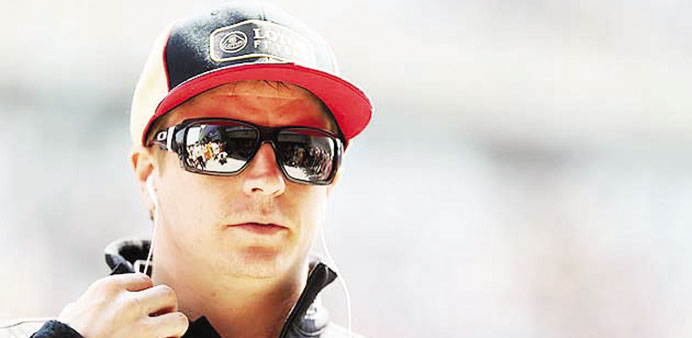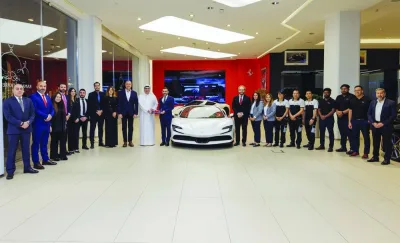Ferrari have retained Raikkonen for the next season.
Reuters/Spa-Francorchamps
Formula One drivers who might have measured themselves up for Kimi Raikkonen’s Ferrari seat shrugged off any disappointment yesterday after the team’s decision to retain the Finn for next season.
“I could see it coming, so if there’s no expectation there can’t be disappointment,” said Force India’s Nico Hulkenberg as the sport regrouped at the Belgian Grand Prix after the August break.
“Obviously that seat is taken but I think there are still a few good options for me out there,” added the 28-year-old German.
“I’m pretty confident I can put something good together and that I’ll be here next year in a good car.”
Hulkenberg, a Le Mans 24 Hours winner with Porsche this year, had been seen by some as a candidate to replace the 35-year-old Raikkonen despite being snubbed in the past.
However, Ferrari announced on Wednesday that the taciturn Finn, whose contract was due to run out at the end of the year, would be staying as teammate to four times world champion Sebastian Vettel.
Hulkenberg has also been linked to the U.S.-based Haas F1 team, who are due to debut in 2016, and he said he was considering all options.
“This is the time of the year, you talk to everyone and you assess your options. You put things how you like them and make a decision when the time is right,” he said. “At the moment I am working quietly in the background and preparing everything.”
Finland’s Valtteri Bottas, who was considered a frontrunner to replace Raikkonen, refused to confirm what discussions, if any, there had been.
He said talks about a new deal with Williams were continuing.
Mexican Sergio Perez, a former Ferrari academy driver who is now at Force India after a disappointing 2013 season with McLaren, told reporters he had been very close to joining Ferrari in 2014.
“For 2013 I had to stay at Sauber for one more year and then I would be going to Ferrari. But then the opportunity with McLaren came,” he said.
“It turned out it (McLaren) wasn’t the right team and obviously in hindsight it damaged quite a bit my reputation,” added the Mexican.
“But I believe with my results in the past year and this year, if I can have strong results then the opportunity can come in the near future to go back to a top team.”
Revised rules
Formula One is set for a further clampdown on the use of telemetric driver aids next year in the wake of revised rules on clutch settings being introduced for Sunday’s Belgian Grand Prix.
The planned restrictions were revealed in a note sent by the sport’s ruling body, the International Motoring Federation (FIA), to the teams yesterday as the F1 circus set up camp again after a month’s break.
The FIA said it was bidding to outlaw telemetry and radio communications that improve performance, a move that will hand more responsibility back to the driver.
The moves have been welcomed by the sport’s long-serving commercial ring-master Bernie Ecclestone who has called for changes that de-clutter the racing and give the drivers more control without so much computerised feedback.
The FIA said: “Methods to limit the telemetry channels sent in real time from the car to the pits will be investigated.
“The objective will be to restrict real-time data flow to signals essential to run the car. Any ‘monitoring’ or non-essential channels should only be logged to on-car memory.”
The FIA identified more than 30 items of information messages that will be allowed in 2016 - including any safety warnings about damage, punctures or car failures that could be dangerous, including reports of problems with a rival team’s car.
Teams will still be allowed to give certain information and instructions relating to making pit stops, marshalling flags, track conditions, lap times and data about gaps between cars during qualifying sessions.
The move is in line with the FIA’s decision to enforce its rules more strictly, notably article 20.1 of the sporting regulations that states “the driver shall drive the car alone and unaided”.
It is widely seen as part of the FIA’s desire to make sure all drivers receive as little assistance as possible from the pit-wall during Grands Prix and to reduce the technological assistance drivers have received in recent seasons.



